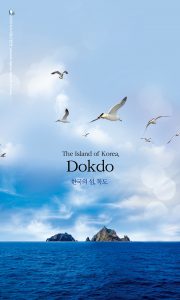
Dokdo is the easternmost island of Korea. With a total area of 187,544㎡, it consists of two main islands, Dongdo (East Island) and Seodo (West Island), and 89 surrounding islets. Despite its small size, Dokdo is inhabited by around 40 residents, including guards and light keepers.
The entirety of Dokdo was designated as a Korean natural monument in 1982. Dokdo is recognized for its high ecological value. It is home to 60 plant species, 160 bird species, 130 insect species, and diverse marine life. Located on a bird migratory route, Dokdo serves as a resting place for many migratory birds, including black-tailed gulls, streaked shear waters, and Swinhoe’s storm petrels. Also, the Dokdo seamounts, formed by volcanic activity, have important geological value, showing the evolution of undersea mountains.
Since Ulleungdo became part of Silla in 512, its affiliated island of Dokdo has been considered a territory of Korea. The geography section of the Annals of King Sejong (1454), official documents of the early Joseon, noted that Dokdo was visible from Ulleungdo on a clear day due to their proximity. In the early 20th century, Dokdo became the first victim of Japan’s imperialistic expansion to Korea. With the end of the Japanese occupation of Korea in 1945, it was returned to Korea.
Dokdo is the most meaningful island to the Korean people. It symbolizes Korea’s full independence and sovereignty.